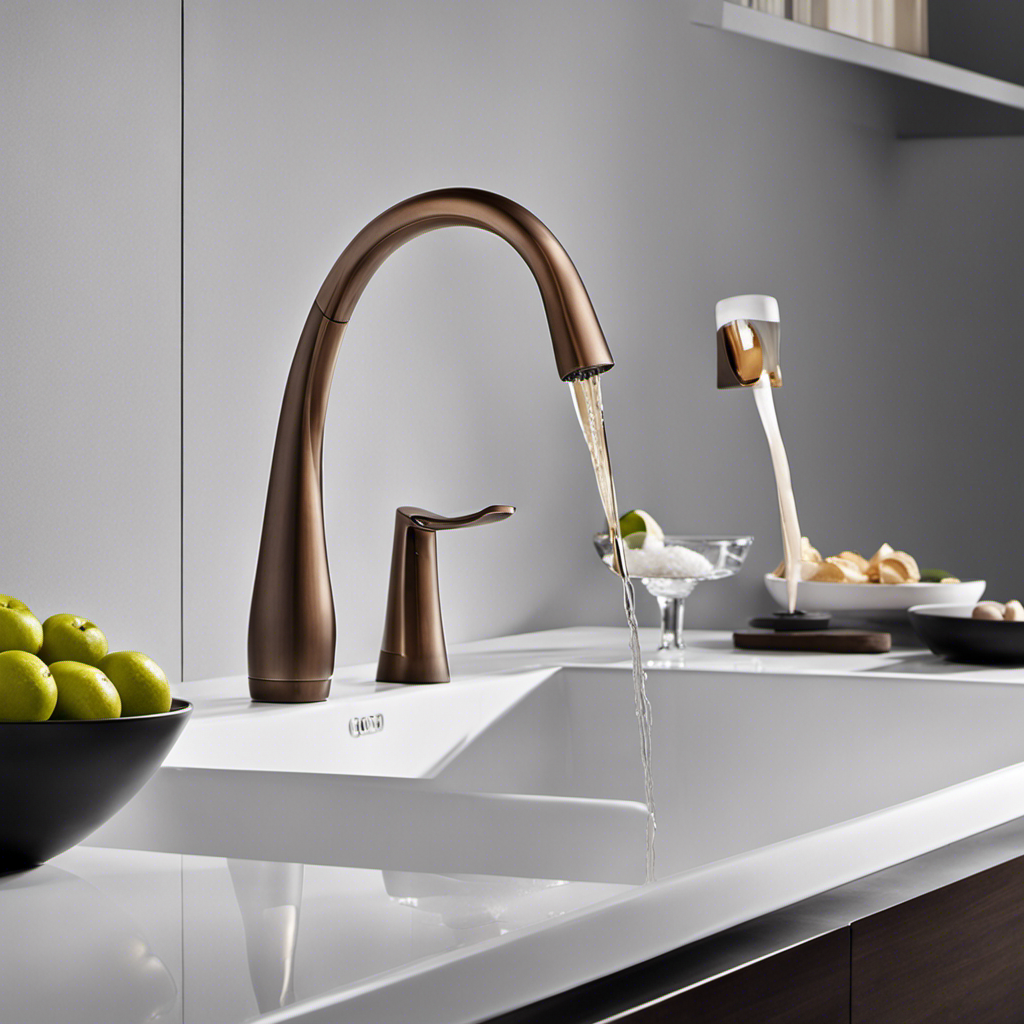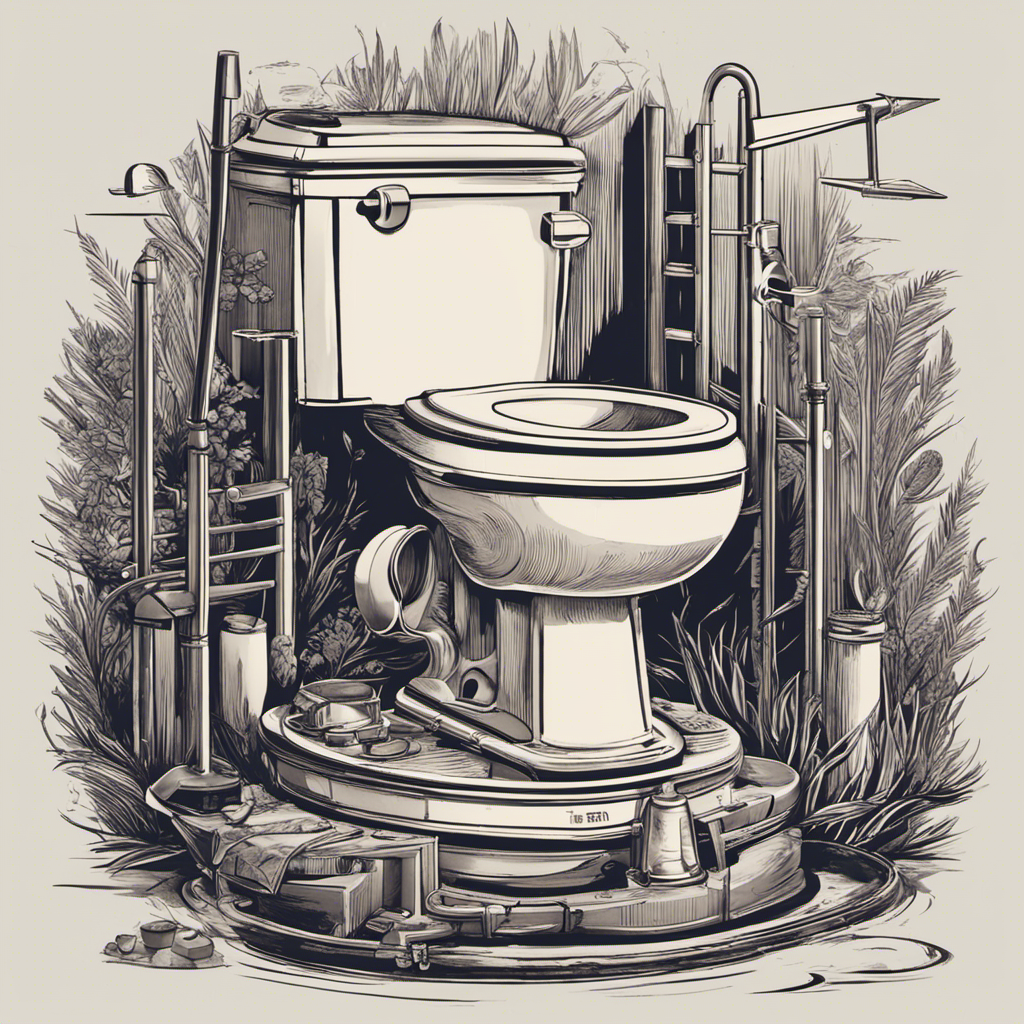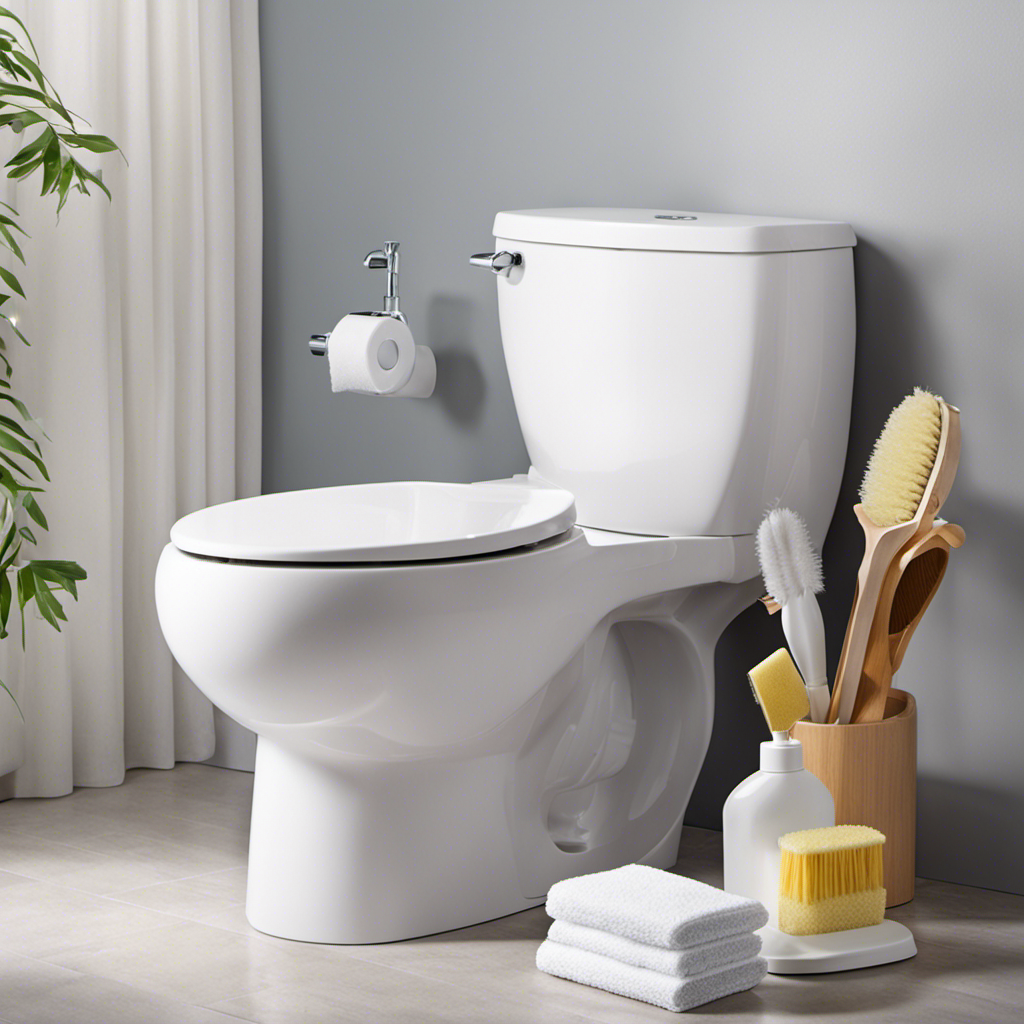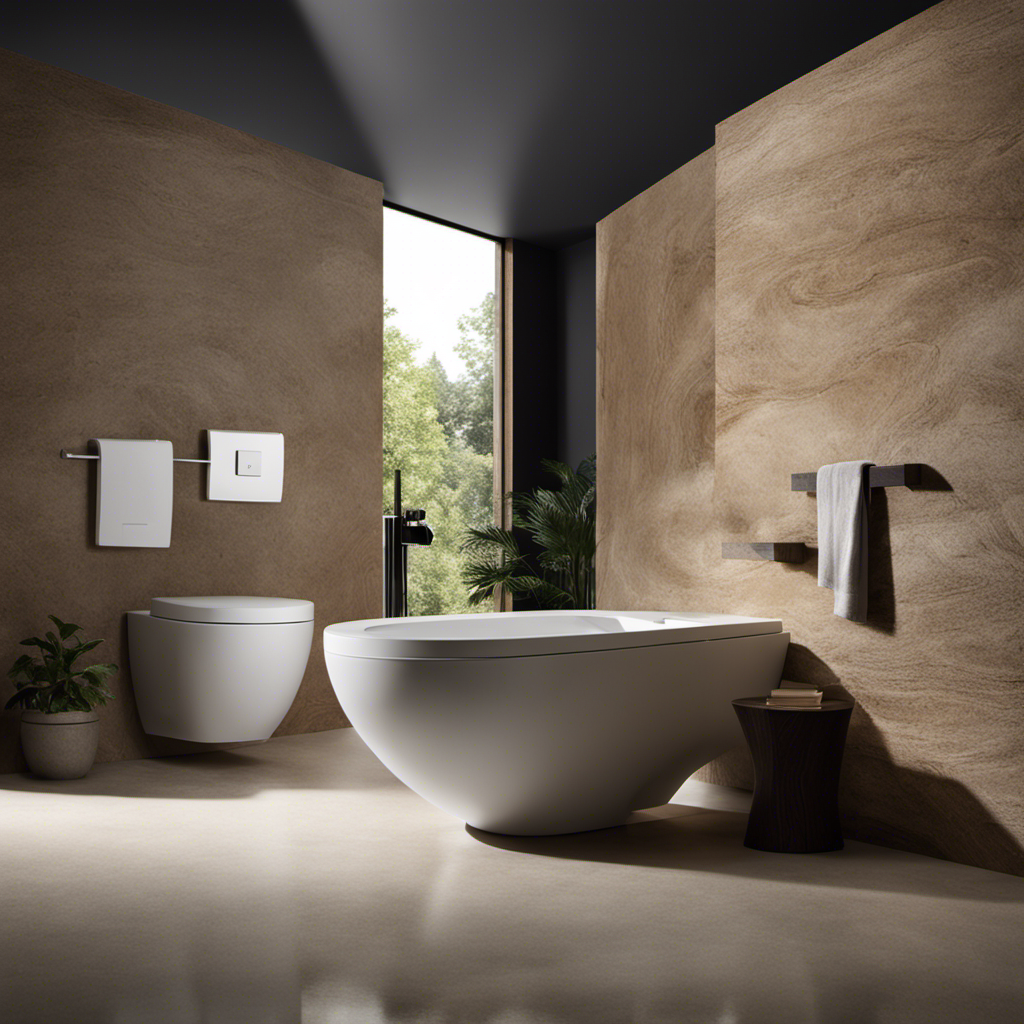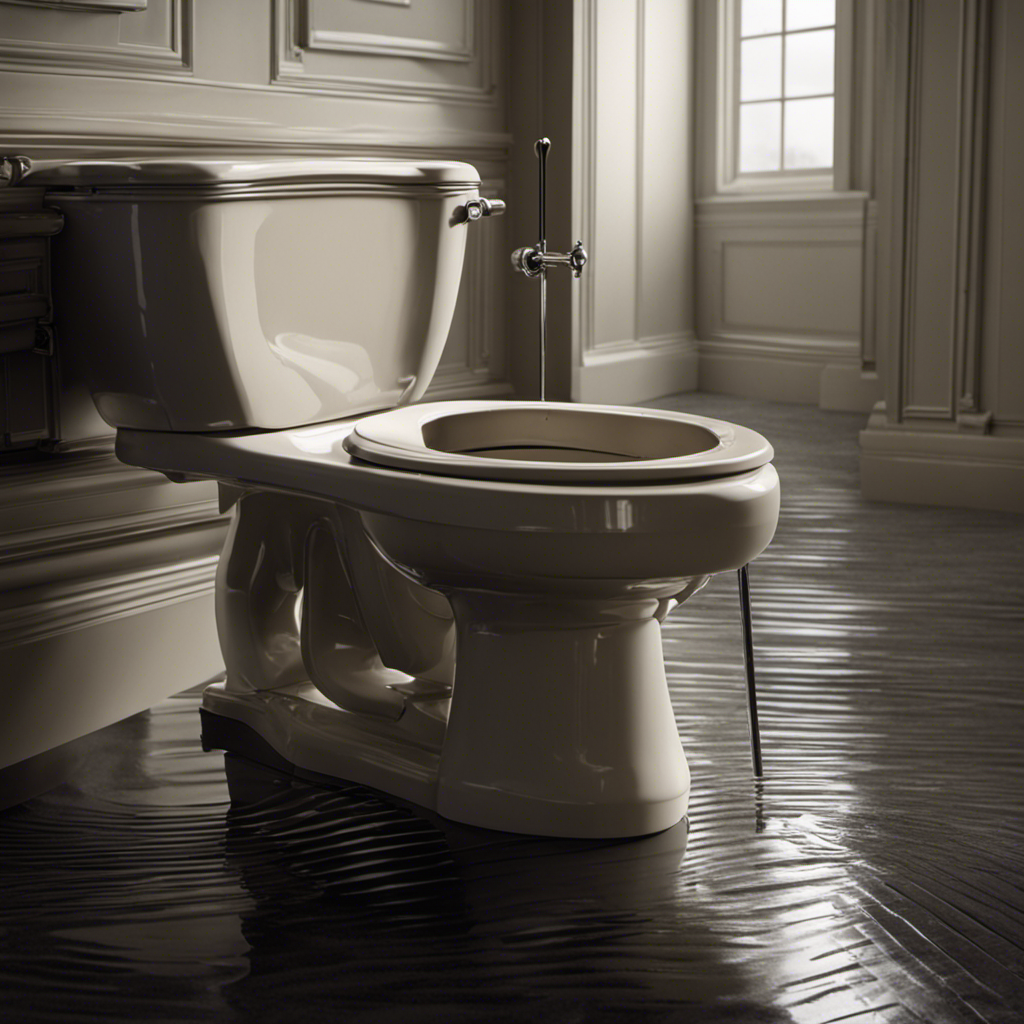As a homeowner, I’ve always been fascinated by the small yet impactful differences in design and functionality between bathroom and kitchen faucets.
Did you know that bathroom faucets are typically smaller in size and have a more compact arc design compared to their kitchen counterparts? It’s true!
While bathroom faucets focus on utility and stability, kitchen faucets offer a wider range of styles and textures.
Join me as we explore the various elements that set these two types of faucets apart and discover tips to prevent rusting in bathroom faucets.
Key Takeaways
- Bathroom faucets are smaller and have a smaller arc compared to kitchen faucets.
- Kitchen faucets have more accessories and functionality features than bathroom faucets.
- Bathroom faucets focus more on utility and stability, while kitchen faucets enhance the overall aesthetics of the kitchen.
- The supply lines and installation of bathroom and kitchen faucets differ based on their intended use.
Size and Design Differences
Bathroom faucets are smaller than kitchen faucets. Kitchen faucets have larger center sets and often include accessories like a hand sprayer and soap dispenser.
When considering design, bathroom faucets are typically more simplistic and focused on functionality. They are designed to fit smaller sinks and have a smaller arc for regular handwashing and bathroom tasks.
On the other hand, kitchen faucets offer a wider variety of styles and textures to enhance the overall aesthetics of the kitchen. Material choices also differ between bathroom and kitchen faucets. Bathroom faucets are made with sturdy metals for durability. Kitchen faucets may have more options for materials such as stainless steel or brass.
These design considerations and material choices play a significant role in determining the size and overall look of bathroom and kitchen faucets.
Variety and Durability Factors
When it comes to variety and durability, kitchen faucets offer a wider range of styles and materials for homeowners to choose from. Here are three factors to consider when it comes to the variety and durability of kitchen faucets:
-
Faucet material options: Kitchen faucets are available in a variety of materials such as stainless steel, brass, and chrome. Each material offers different benefits in terms of durability, resistance to corrosion, and overall aesthetics. Homeowners can choose the material that best suits their kitchen decor and personal preferences.
-
Price range comparison: Kitchen faucets come in a wide range of prices, allowing homeowners to find one that fits their budget. From affordable options to high-end designer faucets, there is a kitchen faucet available for every price range. By comparing prices and features, homeowners can find a durable and stylish faucet that meets their needs without breaking the bank.
-
Durability: Kitchen faucets are designed to withstand the demands of daily use in a busy kitchen. They are built with durable materials and often come with features like ceramic disc valves that ensure long-lasting performance. The durability of kitchen faucets makes them a reliable choice for homeowners who want a faucet that will stand the test of time.
Functionality Features Comparison
I prefer kitchen faucets over bathroom faucets because of their additional functionality features like 360-degree rotation and adjustable water flow.
When it comes to the installation process, kitchen faucets are typically installed with visible supply lines at the bottom that pass through holes in the sink. This makes it easier to turn the water flow on or off.
On the other hand, bathroom faucets usually have copper supply lines attached to the top of the faucet or concealed under the wall.
In terms of water pressure comparison, kitchen faucets tend to have a higher water pressure due to their larger size and design. This allows for a more efficient and powerful flow of water, which is especially beneficial when washing dishes or filling up larger pots.
Supply Line Variation
The placement and visibility of the supply lines differ between bathroom and kitchen faucets.
-
Installation process: Installing a bathroom faucet requires attaching copper supply lines either to the top of the faucet or concealing them under the wall. On the other hand, for kitchen faucets, the supply lines are located at the bottom and pass through holes in the sink. This difference in placement affects the installation process for both faucets.
-
Plumbing requirements: Bathroom faucets with their concealed supply lines require more complex plumbing work, involving cutting into walls or floors. Kitchen faucets, with their visible supply lines, are easier to install and require less invasive plumbing work.
-
Accessibility: Kitchen faucet supply lines are easily accessible for turning the water flow on or off, while bathroom faucet supply lines may require additional effort to access and control the water flow.
Considering these factors, it is important to understand the variations in supply line placement and visibility when choosing between bathroom and kitchen faucets.
Rusting and Maintenance Tips
To prevent rusting in faucets, it’s important to avoid using bleach-based cleaners and to regularly wipe them down.
Rusting in bathroom faucets can be caused by the moist and humid environment, iron traces in the water, rust flecks from supply pipes, and even scratching the faucets with abrasive sponges.
To keep your faucets rust-free, opt for non-abrasive scrubs or brushes when cleaning them. Avoid using steel wool, as it can damage the surface and make it more susceptible to rust.
It’s also crucial to keep your bathroom well-ventilated to reduce moisture buildup. Make it a habit to wipe down your faucets regularly with a soft cloth to remove any water residue and prevent rust from forming.
Frequently Asked Questions
Can Bathroom Faucets Be Used in the Kitchen and Vice Versa?
Yes, bathroom faucets can be used in the kitchen and vice versa. However, it’s important to consider factors such as size, design, functionality, and durability. Commercial settings may require specific bathroom faucets, while kitchen faucets with pull out sprayers offer added convenience.
What Are the Common Materials Used for Bathroom and Kitchen Faucets?
The common materials used for bathroom and kitchen faucets include brass, stainless steel, and chrome. Each material has its pros and cons, such as durability, resistance to corrosion, and aesthetic appeal.
Are There Any Specific Regulations or Standards for the Installation of Bathroom and Kitchen Faucets?
There are specific installation regulations and industry standards for bathroom and kitchen faucets. These guidelines ensure proper installation, functionality, and safety. It is important to follow these standards to avoid any potential issues or complications.
Can Kitchen Faucets Be Used in Outdoor Settings or Other Non-Traditional Areas?
Yes, kitchen faucets can be used in outdoor settings or other non-traditional areas. They offer outdoor faucet options and can be installed in unconventional spaces, providing versatility and functionality beyond the kitchen.
Are There Any Specific Maintenance Tips for Kitchen Faucets That Are Different From Bathroom Faucets?
Maintenance tips for kitchen faucets differ from bathroom faucets. Kitchen faucets may require more frequent cleaning due to food residue. Regularly check and clean the sprayer nozzle, aerator, and handle.
Conclusion
In conclusion, when it comes to faucets, size does matter.
Bathroom faucets may be small, but they pack a punch in terms of utility and stability.
On the other hand, kitchen faucets are larger and offer a wider range of styles and features. They are designed to make your cooking and dish-washing experience a breeze.
So, whether you’re looking for a faucet that’s petite but powerful or a faucet that’s big and bold, there’s one out there for you.
Just remember, like a well-designed faucet, sometimes it’s the little things that make a big difference.
